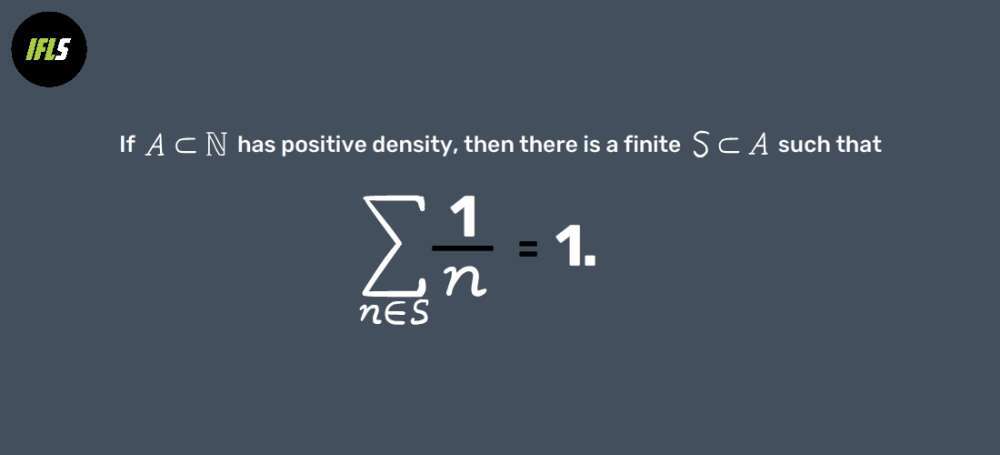The conundrum from 3500 years ago has finally been solved
Recently, a problem believed to be 3,500 years old from ancient Egypt has been solved thanks to modern mathematics.
 |
The content of the problem is stated simply as follows: given a set of positive integers, can we choose from this set the elements whose inverse sum is 1?
This 3500-year-old problem has its roots in ancient Egypt, and in one of his papers, mathematician Thomas Bloom completely solved this problem. A version of this problem was also posed by two mathematicians Erdős and Graham and awarded 500 USD to whoever solves it.
The problem is stated as “If set A is a subset of set N and A has a positive density, then there exists a finite subset S of A whose inverse sum of its elements is 1”. (An example of a subset of N with positive density is A = {3,5,7,9,11,…}, which can be roughly understood as when we take a sufficiently large number of consecutive natural numbers. Then the probability that a number belongs to A is non-zero).
 |
Andrew Granville, a mathematician from the University of Montreal, told Quanta Magazine: “I just think this is an impossible question that no one can solve. I don’t see any obvious tools that can solve it.” However, Bloom happened to find the answer thanks to an article from 20 years ago in the 2003 Annals of Mathematics authored by the author of it’s the mathematician Ernie Croot.
 |
What Croot solved is known as the “colorized version” of the Erdős–Graham problem. It’s so called because it involves “coloring” subsets – essentially, it can be thought of as dividing the set A by dropping the elements of A into a finite number of boxes with different colors.
 |
Mathematician Giorgis Petridis from the University of Georgia told Quanta: “The idea that Croot came up with is brilliant. However, it requires creativity, ingenuity with high computational techniques,” shared Petridis.
Also, there is a difference that in the coloring problem, the entire set A has been divided into boxes. You don’t know exactly how it’s divided, but that doesn’t really matter – all you need to point out is to have a box of numbers that’s nice enough to sum. Croot constructed the proof to show that there will be at least one box with enough nice numbers that satisfy the theorem.
But Croot’s proof does not solve the dense version of the aforementioned problem. Bloom has made good use of Croot’s ideas to completely solve the problem. “I think, Croot’s method [thực sự] stronger than imagined. So I spent a few weeks and found the answer to this problem,” he said.
Bloom argues that Croot has proved a special case of this problem. All Bloom has to do is show that the result will be the same when proving the rest of the cases and that the dense version of the problem will be completely solved.
The methods Bloom uses are really “an upgraded version” of the ideas proposed by Croot. Bloom’s idea was that instead of finding numbers whose inverse sum is 1, find groups of numbers that sum less than 1, and then add them together by 1. “For example, if we find three groups where the sum of the reciprocal of the numbers is equal to 1. the number of each group is equal to ⅓ in different ways, then just add them together and we get 1,” Bloom told Quanta.
With his proof, Bloom solved a question that dates back to ancient Egypt. However, not stopping here, Bloom posed a new question and continued to search for a proof: for which set A ⊂ N, it is impossible to find a subset of A whose inverse sum of elements is 1?
Doan Hung (According to IFL Science)
at Blogtuan.info – Source: vietnamnet.vn – Read the original article here



